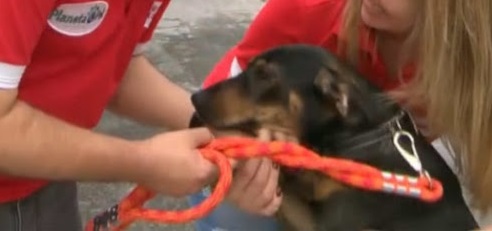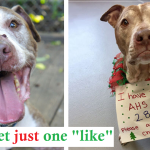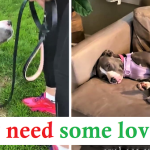A black pet was caught in the midst of a busy freeway in Rio de Janeiro. Close to the lane-separated traces on the high-speed bus lane, the scared dog posed a hazard. Involved that the dog stopped and exited the bus earlier than Silvio Gomes, the driving force.
The passengers weren’t positive what had occurred, however some passengers snapped footage of what adopted.
“As I walked away from Magellan’s station, I seen the dog laying on the bottom subsequent to the concrete breach. The dog was going to leap after I rotated as a result of it was afraid.” World Tv was informed by Gomez.
Gomez was seen within the footage calmly bringing the dog again to the bus. The 2 boarded the car safely, and the opposite passengers cheered and applauded.
The dog appeared to be delighted with the scenario’s enchancment. He but wishes to be happier.
Gomez informed his spouse the story after dropping the dog off on the animal shelter, and she or he immediately obtained him “in hassle” for not bringing the dog house. Gomez grew to become a hero as soon as extra the next day when he adopted the pet after saving it.
To honor the rescue web site’s proximity to the Olympic Video games, he acknowledged he meant to present the dog the title Olmpicos.
When the dog was stopped in the midst of the freeway, the bus driver cheered.
Interactions between dogs and children should be carefully managed to ensure the safety and well-being of both parties. Here are some of the best tips for facilitating a positive relationship between your dog and your child:
- Supervision: Always supervise interactions between your dog and your child, especially when they are young and may not understand how to properly interact with the dog. Even the most well-behaved dog can react unexpectedly to a child’s actions, so it’s crucial to be present to intervene if needed.
- Teach Respect: Teach your child to respect the dog’s space and boundaries. Show them how to approach the dog calmly and gently, avoiding sudden movements or loud noises that could startle or upset the dog. Encourage them to ask permission before petting or interacting with the dog.
-
- Educate Your Child: Educate your child about dog body language and signals that indicate stress or discomfort. Teach them to recognize signs of fear, aggression, or anxiety in the dog, such as growling, baring teeth, or backing away. Help them understand when it’s best to give the dog space and when it’s safe to approach.
- Positive Reinforcement: Encourage positive interactions between your child and the dog by rewarding both parties for calm, gentle behavior. Praise your child for being kind and respectful to the dog, and praise the dog for responding well to your child’s presence. Positive reinforcement helps build trust and strengthens the bond between your dog and your child.
- Set Boundaries: Establish clear boundaries for both your dog and your child. Teach your child which areas of the house are off-limits to the dog, such as the dog’s bed or food bowl. Similarly, establish rules for the dog, such as not jumping on furniture or begging for food from the child’s plate. Consistency is key in enforcing these boundaries.
- Teach Responsibility: Involve your child in the care and feeding of the dog to instill a sense of responsibility and empathy. Assign age-appropriate tasks, such as filling the dog’s water bowl, brushing their fur, or helping with obedience training. Teaching your child to care for the dog fosters a sense of connection and empathy towards animals.
- Create Safe Spaces: Provide your dog with a designated safe space where they can retreat to when they need a break from the child’s energy or attention. This could be a crate, a dog bed in a quiet corner of the house, or a gated-off area where the dog can relax undisturbed. Teach your child to respect the dog’s need for space and privacy.
- Regular Exercise: Ensure that your dog receives regular exercise to burn off excess energy and reduce the likelihood of undesirable behavior around your child. Take your dog for daily walks, engage in play sessions, or participate in activities like fetch or agility training. A tired dog is often a well-behaved dog.
By following these tips and fostering a positive and respectful relationship between your dog and your child, you can create a safe and harmonious environment where both can thrive together.


.png)






